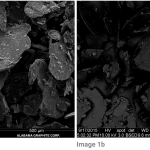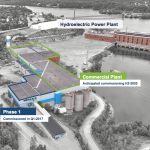PEM Fuel Cells – Hoping to Challenge Internal Combustion
The first article in this series introduced the two prominent types of hydrogen fuel cells - alkaline fuel cells (ALKFCs) and proton-exchange membrane fuel cells (PEMFCs). Fuel cells are devices that convert stored hydrogen into usable energy, and constitute an essential part of the hydrogen economy. Subsequent articles shall focus on various characteristics of these two cells.
The graph above shows the power costs ($/kW) of PEMFCs and ALKFCs as the technology has advanced over time. In other words, they show the initial capital cost for every 1 kW of fuel cell capacity (note that this axis is in the...
Plug-in Vehicles, Unconscionable Waste and Pollution Masquerading as Conservation
John Petersen For eighteen months I've been blogging about the energy storage sector and discussing the current and potential markets for batteries and other manufactured energy storage devices. A recurring theme that I've discussed many times is the unrecognized but undeniable truth that while plug-in vehicles masquerade as conservation measures at an individual level, they're incredibly wasteful at a societal level. The conclusion is counter-intuitive and my articles on the subject invariably draw heated criticism from self-anointed defenders of the faith. Their arguments, however, do not change the inescapable truth that plug-in vehicles are one of the most...
Grid-scale Energy Storage: Lux Predicts $113.5 Billion in Global Demand by 2017
John Petersen Last month Lux Research released a bottom-up evaluation of the cost effectiveness of eight energy storage technologies in six grid-scale applications throughout 44 countries, including all 50 U.S. states. Their report titled "Grid Storage under the Microscope: Using Local Knowledge to Forecast Global Demand" predicts that annual global demand for grid-scale energy storage will reach an astounding 185.4 gigawatt-hours (GWh) by 2017 and represent a $113.5 billion incremental revenue opportunity for an industry that currently generates sales of $50 to $60 billion a year. In the grid-scale sector alone, Lux predicts an average...
Epic Changes Are Coming in the Electric Power, Transportation and Energy Storage Sectors
John Petersen Epic is the only word I can use to describe an evolving tragedy that killed tens of thousands of people, inflicted hundreds of billions in property damage, destroyed 3.5% of Japan's base-load power generating capacity in a heartbeat and will cause recurring aftershocks in the global electric power, transportation and energy storage sectors for decades. While I'd love to believe the worst is behind us, I fear the times of trouble have just begun. Since it's clear that Japan will have to turn inward and serve the urgent needs of its own population first, the...
NanoMarkets LLC Forecasts $8.3 Billion Annual Market For Smart Grid Batteries By 2016
In August of last year I wrote an article titled "Grid-based Energy Storage: Birth of a Giant." Over the last 12 months I've written a series of follow-on articles that discuss the principal classes of manufactured energy storage devices and the companies that are making or planning to make products for smart grid energy storage applications. My entire archive of articles on the energy storage sector is available here. One of the biggest problems I've encountered over the last year has been a dearth of reliable third party information that can help investors understand the breadth and...
Why Lead-Carbon Batteries Will Deflate the Lithium-Ion Bubble
John Petersen For over a year I've been cautioning readers that while lithium-ion batteries are glamorous, sleek, sexy and hot; they are about to face a formidable challenge from lead-carbon batteries that are a little bulkier and heavier, but offer competitive cycle-life and power for a tiny fraction of the cost. To placate lithium fundamentalists and EV evangelists, I want to clearly state up front that lead-carbon batteries will probably not be the first choice for plug-in vehicles. Nevertheless, it is crystal clear that lead-carbon batteries will be the only sensible choice...
Flux Powers into Battery Management
by Debra Fiakas CFA Proper electric and thermal management of advanced battery packs is imperative. During operation, voltage and temperature differences in the battery cells can lead to electrical imbalances and decrease system performance. A good battery management system can ensure strong power delivery and extend battery life. Dozens of battery management systems have cropped up to fill this need for the lithium ion batteries used in new electric vehicles and alternative energy applications. The highly populated field has not intimidated the newest competitor, Flux Power Holdings, Inc. (FLUX: OTC/BB). Flux is a 2008 spin-off of...
Energy Storage: Q-2 2012 Review and Analysis
John Petersen While I jumped the gun last week and published my third quarter outlook for the energy storage and vehicle electrification sectors early, it's worthwhile to take a look back and see how my tracking list of companies performed over the last quarter and examine the past to see what the tea leaves in the bottom of the cup portend for the coming quarter. So without further delay I'll present my price performance table for the second quarter that ended on Friday. Q-2 was a dreadful quarter for Maxwell Technologies (MXWL) and ZBB Energy...
Electrovaya’s Battery Bargain
by Debra Fiakas CFA Last week management of Electrovaya Inc. (EFL: TSX; EFLVF: OTC/QB) were forced to issue a statement stating there were no fundamental developments to explain a dramatic decline in its share price. The stock was trimmed back by 30% in two days under exceptional trading volume. Electrovaya has developed proprietary lithium ion polymer batteries for grid storage and transportation applications. Other than financial results for the quarter ending March 2017, the Company has had little to tell investors about the batteries, its customers or any other topic. Electrovaya distinguishes its lithium ion batteries among...
Hydrogen in Oil’s Back Yard
by Debra Fiakas, CFA
As well derricks cast oily shadows across the landscape, Air Products and Chemicals, Inc. (APD: NYSE) has installed Saudi Arabia’s first hydrogen fueling station.The set up is tucked safely into APD’s new technology center in a science park, but the significance of this incursion into oil and gas country can be felt across the region.The fueling station, which incorporates APD’s SmartFuelhydrogen fueling technology, will service six Toyota Mirai fuel cell electric vehicles. Undertaken in cooperation with Saudi Aramco, the project is intended to demonstrate the potential for hydrogen as transportation fuel.
Hydrogen has potential advantages over conventional fuels, including Saudi Arabia’s oil and...
Take A Bromide For Flow Battery Frustration
by Debra Fiakas CFA The most recent article Vanadium Flow Battery Stocks: Barely A Dribble may have disappointed some investors who were expecting more opportunity for a stake in building energy storage. Large scale energy storage is an idea to which many in the utility industry speak, but few power producers have made significant investments beyond lithium ion batteries. Flow batteries have long been touted as a cost-effective and technically superior alternative for wind or solar power storage or for load-balancing efforts on the electric grid, as examples. In the last post we looked at the flow battery...
Yankee Graphite
Several graphite developers have made plans to integrate forward into the hottest segment of the market - battery-grade graphite. According to Industrial Minerals, spherical graphite suitable for lithium ion battery anodes is priced in a range of $2,700 to $2,800 per metric ton in China where many battery manufacturers are located. This compares quite well to the range of about $655 to $790 per metric ton for flake graphite concentrate.
The integration strategy has sent the sector into a frenzy of activity to prove their graphite meets expectations of battery manufacturers. The only graphite deposit in the U.S. mainland is under development by Westwater Resources...
Nemaska Sprints to Early Lead In Lithium Mining Race
Thank Elon Musk with his Tesla (TSLA) gigafactory for sparking a global obsession with lithium-ion batteries and the materials need to turn them out. Claimed by Musk to be the largest building in the world, the factory was planned to reach capacity in stages. By the time the factory is fully completed in 2020, production capacity is expected to be 150 gigawatt hours of battery packs.
Ever since construction of Musk’s gigafactory began in 2014, investors around the world have been fretting over the adequacy of lithium supplies in particular. The gigafactory concept appeared to trigger a whole slew of ‘me too’ factories...
Hydrogen Fuel Is Not Dead
John Lounsbury With the furor over the potential for hybrid, plug-in hybrid and all-electric cars recently, one might think the hydrogen car was dead. Nothing could be further from the truth. Feasibility at an affordable price appears to be established and market availability of hydrogen powered cars may come sooner than you think. Many issues remain to be addressed and this article will try to cover them. The problems to be overcome are not insurmountable, but are also not trivial. These problems include the economics of hydrogen production, transportation, distribution and...
Hydrogenics: Will Hydrogen Skeptics Be Blown Away?
The hydrogen technology developer Hydrogenics Corporation (HYGS: Nasdaq) is taking on wind energy. The company’s fuel cell power systems for stand-by and site power sources, hydrogen generators for industrial situations, and energy storage and fuel solutions for fleet owners. Hydrogen has gained in popularity because it is a zero-emission fuel source when burned with oxygen. The energy efficiency of hydrogen as a transportation fuel is also enticing. An electric motor powered by hydrogen fuel cell is two to three times more efficient than an internal combustion engine running on gasoline.
Hydrogen is not without its critics. One of the criticisms is that hydrogen is not entirely a carbon-neutral...
Why Long Range EVs Can Never Be Cost Effective
by John Petersen America’s love affair with the automobile has always been based on the freedom of the road and the ability to hop in the car and drive wherever we want to go; be it to the corner store to buy a loaf of bread or out to the lake for a long weekend. Even though most of our trips are short, people invariably want the flexibility to go for a long drive when the open road beckons. Unfortunately, that mentality is disastrous when it comes to EV economics. I’ve been writing about energy...






